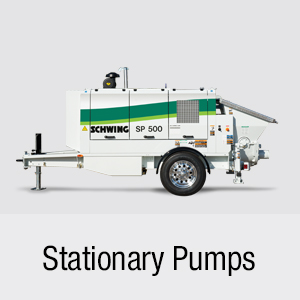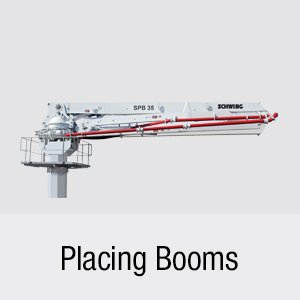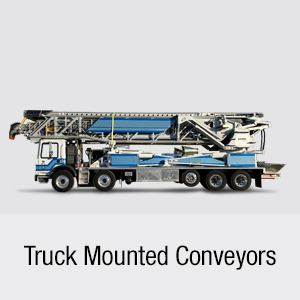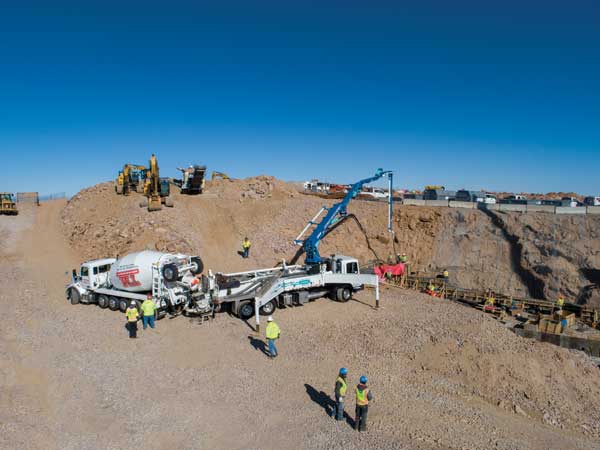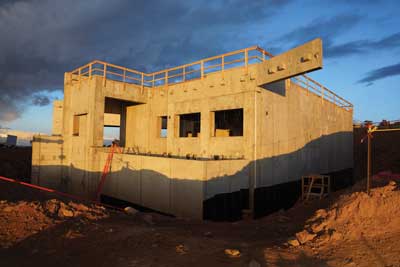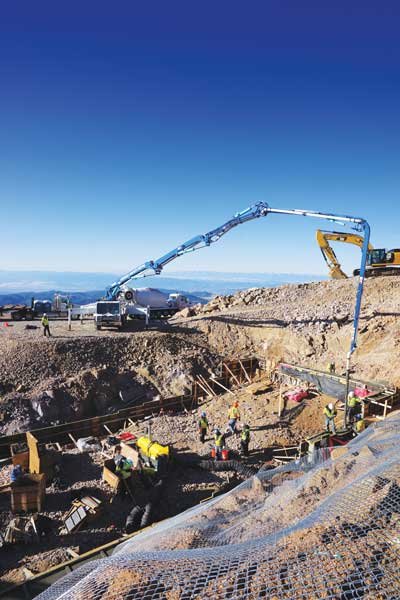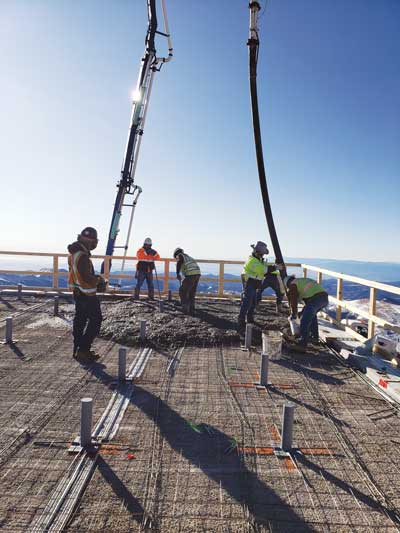The high points of pumping concrete on “America’s Mountain
Every owner of a concrete pump expects that machine to perform as designed. Even when confronted with moderately adverse conditions such as high or low temps or extreme bouts of heavy rain or snow, expectations are that the pump will do its job. But when the job it is being asked to do is at 14,115 feet above sea level, where it snows year round, temperatures can plunge to as low as -39° and there is a steady 20-30 mph wind nine months of the year, all bets might seem to be off. So, when Southwest Concrete Pumping took on a job to help construct the new Pikes Peak Summit Complex, a major replacement of the current info center/gift shop, it knew it was entering relatively uncharted territory. But today, better than a year into the project, the company says the Schwing S 38 SX pump it has taken up and down the mountain now for more than a year, has performed admirably. Expectations were high — and met.
Called to the Mountain
Based out of Denver, Southwest Concrete Pumping, Inc. operates a fleet of 46 Schwing pumps ranging in size from 20 meter to 65 meter units, with another 15 pumps at its sister company, AJ Concrete Pumping II, Inc. in Atlanta. Southwest offers services in a broad range of pumping categories according to Eric Ball, the company’s operations manager.
“We literally do it all: from high rise work with a placing boom, to residential pours to small and large commercial jobs, to infrastructure projects of all sizes and types,” he said. “We feel we can handle whatever anyone needs in terms of concrete pumping. So, when we were contacted by general contractor GE Johnson to provide our services for the Pikes Peak job, we felt we were up to the challenge.”
And a challenge it could prove to be. Pikes Peak averages about 46 feet of snow per year and, due to the elevation, is prone to high winds. Though the record wind gust for the mountain is listed at 150 mph, that is only an estimate since the anemometer used to measure wind speed blew away at 112 mph. Couple those weather extremes with a 19-mile long drive on the Pikes Peak highway which snakes its way up the mountain and you have the makings for a once-in-a-lifetime challenge. And Southwest took it.
A Complex Issue
The current Pikes Peak Summit House is a nondescript structure that offers the standard mix of info and souvenirs — bolstered by high-altitude fried donuts which have achieved cult status. Built in 1963, the structure has suffered the ravages of time and the brutal mountaintop climate and was recently slated for replacement. On June 4, 2018, officials broke ground on the site of the new $60 million Pikes Peak Summit Complex which will be located adjacent to the current facility.
“The new structure will be 38,000 sq. ft. in size and draws upon the latest in environmental design features,” said Ball. “More than a half million visitors come to Pikes Peak each year, so the architects who designed the new complex wanted not just to create a great impression, but do so in such a manner that it blends into its surroundings rather than imposing upon them. And it is designed with intent to qualify for Living Building Certification, the industry’s most advanced measurement of sustainability.”
As the word “complex” in the name implies, the new facility will be more than simply a grander version of the previous structure (though it will definitely be that). It will offer rooftop terraces for viewing and dining, a main Summit House with informational kiosks — and a majestic view — along with a new location for the existing plant building, Colorado State University Communication Facility and the High Altitude Research Laboratory.
Doing a 180
In choosing the ideal pump for the project, Southwest had additional criteria to consider, namely Pikes Peak Highway’s more than 150 turns — many of them 180° switchbacks — and a steady 7% grade. Ball said they knew the challenges they’d be facing.
“GE Johnson had a special truck brought in to allow them to transport larger precast sections for the structure, yet still be able to navigate the switchbacks,” he said. “Similarly, we chose the
S 38 SX because it offered a combination of short wheelbase (21’ 4”) and the long boom length we knew we’d need for the job. And we were proven right: though it was tight at some points along the route, that rig was able to handle every switchback. Because we also ordered it with the automatic transmission, it was literally the perfect pump for that job.”
Pre-Cast of Thousands
In order to minimize the amount of work needed to be done at the summit, much of the main structure of the complex is pre-cast in nature, with most of the sections poured in advance, then hauled up the mountain. However, Southwest is still pumping all the structure‘s footers, micropiers for a sidewalk, __” topping slabs on the precast, pier caps for the terraces, and the __” slab-on- grade. Because of the amount of pre-cast in the design, most pours were relatively small: rarely exceeding 50-60 yards. Small pours aside, Ball said the unit’s five-section boom configuration still paid big dividends.
“Because of that feature, we were able to get the boom into windows and openings to help minimize the amount of system needed, he said. “But, because of lack of accessibility in some parts of the job, some pours still required as much as 100′ of 4″ pipe and 100′ of 4″ hose and that was no problem, even under some less-than-ideal conditions.”
He added that, at the outset of the project, they were concerned about the oil being drawn into the hydraulic pumps because of the pressure difference at that altitude. “However, that has not been the case at all,” he said. “We do throttle down to slow the hydraulic pumps a bit and allow the oil time to get into the system, but both the truck and the pump have been outstanding.”
Stop and Go Concrete
From a concrete mix perspective, the Pikes Peak job seemed to offer the worst of both worlds: a long drive from the ready-mix plant to the job site, followed by mostly sub-freezing temperatures once it arrived there. Ball said their supplier, Transit Mix, a Colorado Springs company, provided a mix designed to deal with each challenge.
“It was about an hour from their plant to the base of the mountain and then another hour for the trip up,” said Ball. “So, they used a retarder to deal with the time element and then added an accelerator once they got to the top to help it set up quickly without fear of freezing.”
Because the project is being done with the mountain still open to the public, Ball said they have to be at the summit before the public gets there to avoid backing up traffic during “peak” times.
“So we, along with Transit Mix’s seven or eight trucks, are generally escorted up the mountain at the same time GE Johnson is bringing up a load of precast,” he said. “After finishing our pours, we then come down the mountain with the public.”
Into Thin Air
As with any project, preparation for the Pikes Peak job was key. Unlike most projects, however, Southwest’s team had one additional issue to deal with: the risk of altitude sickness as they did their work. Sometimes called mountain sickness, the condition and its symptoms — headache, nausea, vomiting and lightheadedness — occur when the body doesn’t have enough time to adapt to the lower air pressure and lower oxygen levels at high altitudes.
With both their employees’ well-being in mind and the knowledge that a worker performing at less than 100% can be a risk to safety, GE Johnson has been very proactive about dealing with the risk of altitude sickness. Bell said they are following Johnson’s lead on that issue.
“For every pour, we have two operators, additional crew members and a support vehicle that follows the pump when we head up here,” he said. “In that way, if one of the operators should begin showing symptoms, the support team can take him down the mountain, the backup operator can run the pump, and production willd not be impacted. In the same way, on the days when we have to run system to get to hard-to-reach areas, we would use four guys rather than two, in order to allow for plenty of breaks, opportunities to hydrate and so on. At normal altitudes, one man can handle the hose, up there we had two or three. You just have to do everything a bit slower and more purposefully.”
Winding Down
The 38 meter pump proved so effective at the Pikes Peak site that, to date, Southwest has used it almost exclusively. Ball said they substituted it only once with a 39 meter unit when the 38 SX was needed for a specialty pour elsewhere.
“It has done everything we’ve needed under some very challenging conditions, he said. “While we try to bring it down after every pour, there are times when we’ve had work on back-to-back days, and we would leave it overnight. In such cases, we would simply plug it in and wrap the hydraulic tank in blankets and we were fine. At this time in the project, however, we are down to pumping just about once a week, so we bring it down after each pour.”
Being from that area, Bell and his team understand how special Pikes Peak is and have appreciated the chance to be a part of this major overhaul.
“This has been a great project and we’re happy to be working alongside GE Johnson’s group to contribute our part to it,” he said. “Our people have been impressive in dealing with the challenges they’ve faced, and our equipment has definitely risen to the challenge. We will all be able to look up at Pikes Peak with a real sense of pride at what we’ve all done.”
The new Pikes Peak Summit Complex is slated for opening in the 2020-2021 time frame.
SPECS:
Owners: City of Colorado Springs, Colo.
General Contractor: GE Johnson Construction, Co. Colorado Springs, Colo.
Pumping Contractor: Southwest Concrete Pumping, Inc. Denver, Colo.
Concrete Supplier: Transit Mix Concrete Co., Colorado Springs, Colo.
Architects: RTA Architects, Colorado Springs, Colo. & GWWO Architects, Baltimore, Md.
Equipment: Schwing S 38 SX truck-mounted concrete pump with placing boom.


